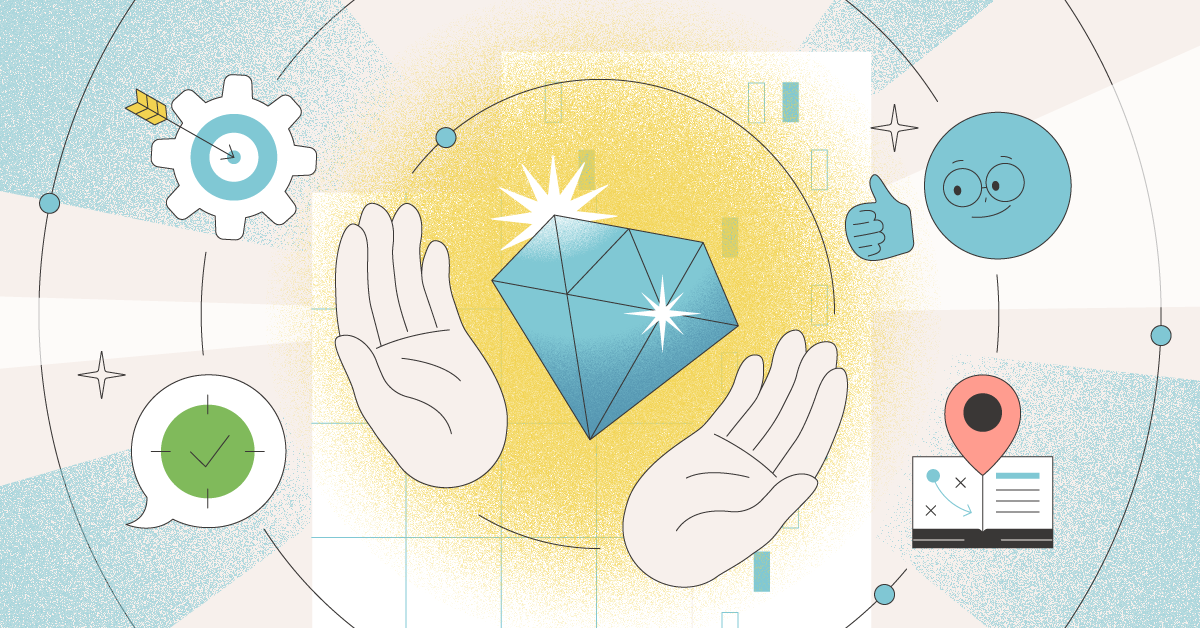
Employees are looking for more than a paycheck; they want purpose, meaning, and connection in their workplace. Creating a purpose-driven workplace isn’t just about improving morale—it’s about building a culture where employees feel deeply connected to the organization's mission, vision, and values.
When employees are motivated by a sense of purpose, their enthusiasm translates into stronger teamwork, innovation, and resilience, driving the company forward. Leaders can take a few actionable steps to foster a purpose-driven workplace.
Work to Understand What Employees Need and Want
There are a lot of ways to create purpose in your workplace, but it will only be effective if it’s the right kind of purpose. Every person is motivated by unique motivators, so taking a one-size-fits-all approach here will not work in your favor.
Start by asking your employees what they need! They are the best resource to find a way forward. You can do this through internal surveys, specific questions during one-on-one meetings, town halls, and frequent communication, but if your employees are struggling to articulate their needs, there are assessment tools available to help with that process.
A multi-science suite of assessments can transform your team’s understanding of themselves and others. Assessments are a great tool for employee engagement, and the 12 Driving Forces® assessment, in particular, reveals what motivates an individual and how it can help deepen their relationship with their work.
Assessments help build stronger teams and create transparency within an organization. They also improve communication and productivity and create a purpose-driven workplace.
Here are some questions you can ask post-assessment when the employee has the results and a list of their top Drivers (what motivates or “drives” them at work):
- What parts of your current responsibilities feed your top Drivers?
- What parts of your current responsibilities detract from your top Drivers?
- What do you want to accomplish in the next three months? Six months? Year? Five years?
- What skills do you use in this role that play into your passions?
- Is there a skill of yours that we are underutilizing?
- Is there a skill you want to learn that will help improve your motivation in this role?
Understanding your team's needs will help you align the role to their needs.
Focus on Customized Development Plans
Once you understand what your team members want out of their work and their roles, you can use that information to motivate them.
One way to create a customized development plan is to provide personalized learning opportunities customized for each role. Use knowledge of their Drivers to guide how you present new information and their learning opportunities. If they work best with a hands-on experience, set up a dedicated time for them to shadow an upper-level employee in their department. If they thrive in a group, making new contacts, send them to a conference where they can expand their network.
By offering a variety of learning formats like different courses, workshops, mentorships, and on-the-job experiences tailored to the employee’s preferred learning style, employees will feel supported in learning at their own pace and in their own way.
You can go a step further and ask your employees how they best envision implementing their passion into their workplace. If someone has a very high Intellectual driver, for example, give them a research project and let them implement the findings in their role. If someone has a high Objective driver, task them with creating clarity around their work processes and cutting out extraneous details or processes.
"While creative work can be accomplished by individuals from diverse Drivers, in a team setting I've found that you can build upon something everyone shares in common,” said Bobby Tyning, Vice President of Creative Services at TTI Success Insights. “On our team, the majority all share a high Receptive score: they are open to ideas and willing to try things that are uncommon or new. At the same time, we've found that the more Structured individuals also contribute by reigning us in and keeping us grounded. Experiencing that balance has made a big difference, especially with so many high Harmonious people on the team."
Build Community Within Your Organization
A final step in creating a purpose-driven workplace is building community within teams and the organization.
Gallup has repeatedly found that strong friendships at work improve employee engagement, job success, profitability, safety, retention, and innovation. Those are benefits you can’t ignore!
Don’t try to force connection between groups, but give people options to interact at various levels. Don’t ask employees to use their free time to bond; instead, give them a scheduled time within their workdays for coffee chats and breaks. Providing creative supplies in your break space like puzzles or coloring books can get conversations started and help people blow off steam as they work.
Another way to build community in your organization is to create opportunities for small groups to meet, aligned with their interests and needs. This can look like a group of working moms connecting and sharing about their experiences in the workplace, LGTBQ+ employees supporting one another, or even fans of pop culture meeting up to talk about movies and media.
Again, all of these efforts should occur naturally without prompting from leadership, but your executives can encourage the formation of the groups. Catering a lunch for their quarterly meetings or allowing employees to make time in their days to connect in this way can encourage that outreach, and the effects highly outweigh any perceived loss of productivity.
Another way to build community is to develop a mentoring program within your organization. Giving people the opportunity to connect with more experienced people across the company can help them gain a new perspective while finding purpose in gaining forward momentum. It can be especially beneficial to find a mentor with similar Drivers. Team members can ask about how their mentor finds passion in their work, and gain unexpected insight from digging deep into a role’s passions and purpose.
Making Motivation Matter in the Workplace
By fostering an environment where each team member’s motivations and talents are valued, organizations can unlock a powerful sense of purpose that drives individuals and teams to perform at their best.
"When leading a team, I try to focus on understanding what truly drives each individual, their motivations, passions, and what fuels their energy,” said Shaunna Adinolfi, Partner Experience Manager at TTI. “Motivation is the ‘why’ behind what we do, the force that keeps us moving forward. When that drive aligns with their role, it creates not just productivity, but genuine fulfillment."
Implementing practices such as understanding employees’ unique Drivers, supporting their personal growth, and building a strong internal community are investments in a thriving, connected, and forward-looking workforce.



